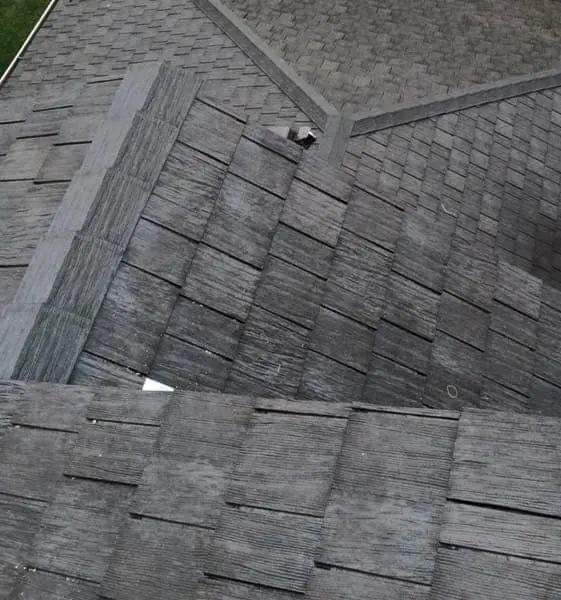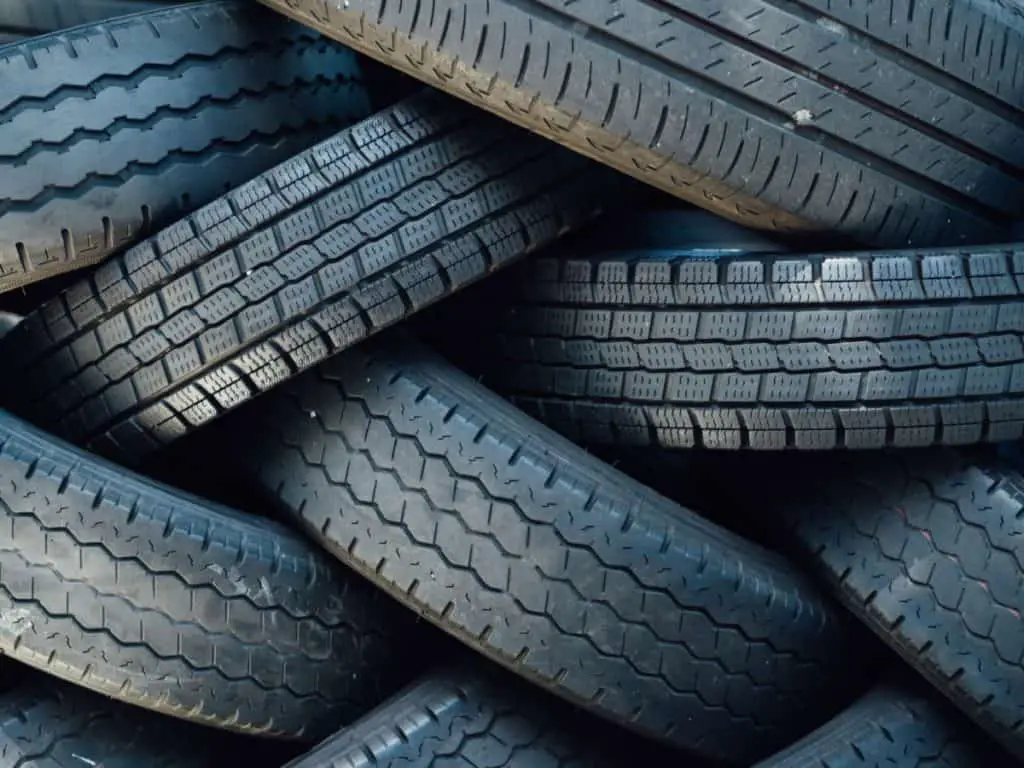
What are rubber shingles?
This article is not about the low slope roof system called EPDM. Rather it is about rubber shingles or synthetic slate which I refer to interchangeably. Rubber shingles are commonly made from recycled materials like rubber tires, EPDM, and TPO. The shingles are formed by using an injection molding process to shape the synthetic material into any form.
It has been estimated that in order to make enough shingles for one roof, it can take anywhere from 250 to 1,000 recycled tires.
If you are thinking about a rubber roof as your next roof system there are several advantages and disadvantages that you must consider as you make your decision.
Worried About Doing the Work Yourself?
I recommend finding a professional roofing contractor through our trusted partner Home Advisor because they allow you to get up to 4 quotes for free. This allows you to compare and choose the best roofing professional for your needs. Check them out by clicking this link.
Pros:

1.Forms:
Rubber shingles can be molded into many different forms. This includes shapes to mimic stone slate, wood shake, and clay tiles. This allows you to find any shape or style to fit any time of home or building. Some of the most common styles are slate or shake. Rubber slate looks really close to the real thing. Most people would not be able to tell the difference between the two unless they touched it. This means you can get the great look of natural slate without the additional costs.
2.Price:
The great thing about rubber shingles like rubber slate is that it doesn’t cost as much as the real things. Rubber slate costs about $165 to $509 per square (1 square = 100 square feet). When actual slate costs about $500 to $1200 per square. You can compare the prices of more roofing materials by checking out this table and graph I made comparing the estimated prices of 17 different types of roofing materials and their respective lifespans.
3.Impact Resistance:
Rubber shingles have a strong impact resistance. The rubber material does an excellent job of absorbing the force of falling objects. Rubber shingles are rated as a Class 4 impact rating which means it was tested to withstand up to 2-inch sized hail.
4.UV Resistance:
Rubber shingles are often made out of recycled tires. Tires contain a material called Carbon Black which makes it strong against UV radiation. This property is inherited by Rubber shingles making them UV resistance. Another benefit of this is that they will retain their color for longer periods of time.
5.Wind Resistance:
Rubber shingles are resistant to high winds. They are not as strong as some other types of roofing materials but they still have a strong wind speed rating. Rubber shingles are rated for up to 110 mph.
6.Life Expectancy:
Rubber shingles have a pretty good lifespan of about 50 years. This is not as good as some materials like real slate, but it is better than typical shingles which are about 20-30 years.
7.Versatile:
Rubber shingles are versatile meaning they can be used on both commercial or residential roofs as long as it is not a low slope roof. Like most shingles, rubber shingles need at least a 2:12 pitch. Which means for every 12 inches the roof rises 2 inches. You can click here to read an article I wrote about how to find the slope of your own roof.
8.Walkable:
Unlike tiled roof systems like stone slate, clay tiles, concrete tiles, etc. Rubber shingles or Rubber slate is walkable. You do not have to worry about stepping on the wrong spot and cracking a shingle because of how flexible rubber is.
9.Weight:
The weight of rubber shingles or rubber slate is a lot less than real slate or concrete tiles. The weight is about 200 to 400 lbs per square. That is significantly less than the weight of real slate which is about 800 to 1500 lbs per square.
10.Recyclable:
Rubber shingles are recyclable, and they are made out of recycled materials. One rubber shingle can be made out of 95% recycled materials like tires. This helps reduce the waste of all our excess tires.
11.Maintenance:
Rubber shingles require little to no maintenance. If any maintenance is needed it would be something like a repair.
12.Repairs:
Repairing Rubber shingles is a simple process that is similar to repairing regular shingles. It costs a lot less to repair synthetic slate as opposed to repairing actual slate. If you do not know how to repair roofs, I would always recommend you hire a professional who is trained
13.Installation:
Rubber shingles are easy to install. They are installed in the same manner one would install regular shingles by nailing it. If you are interested in seeing my top pics for roofing hammers you can click this link. Rubber shingles can also be easily cut with a utility knife.
14.Fungal/Rot Resistance:
Rubber slate is not prone to fungal, mold, mildew, rot, or decay. It also does not provide food or a convenient place for insects and other pests to make their nests.
15.Temperature:
Rubber shingles/slate is a stable material. It can be installed in hot weather and in cold weather without much change to it. This resistance helps make it a durable roof system.
Cons:

1.Fire Resistance:
Rubber does not do very well in a fire. Due to this fact, rubber shingles typically only have about a Class C fire rating which is less than the highest Class A fire rating.
2.Smell:
Rubber slate has a distinct smell that you can sense when it’s first installed. The smell eventually fades away but in the beginning, this may be a deterrent to some.
3.Not the cheapest roofing option:
Rubber slate is definitely more affordable than real slate but it is more expensive than shingles. If you haven’t seen my comparison charts yet, I recommend taking a look at how Rubber slate compares to other roofing materials by clicking this link here.
Is it right for you?

Rubber shingles or Rubber slate is a great roofing option for those who love the look of natural slate, shake, or a tiled roof but may not have the budget for it. Rubber makes a great durable alternative that is not brittle and won’t fade much.
However, the ultimate decision is up to you to figure out what kind of roof system best fits your individual needs. I have plenty of other resources that you can turn to for more information about different roofing materials.
I spent several months researching and writing an 10,000+ word article about 17 different types of roofing materials. My goal for the article was to create a guide that helps give you a general idea of all the different types of roofing materials that are available to you so you can make an informed decision.
You can check out the guide by click this link below:
17 Roofing Materials Used Today
Alternative Options:
If you are interested in seeing how Rubber Slate compares to other roofing materials that are similar to this style of roofing materials. You can click on any of the links below to see other Pro/Con lists for those materials.
Some alternative options you can look at are:
Related Questions:
Which is better Rubber Slate or Natural Slate? Natural Slate is more durable and will last longer than rubber slate. But it is more brittle and more expensive than rubber slate. It mainly depends on what your budget is and how long you want it to last.
Are rubber shingles good? Rubber shingles are a good roofing material because they are durable, aesthetically pleasing, and more affordable than slate. It’s important to note that rubber shingles are more expensive than regular shingles but will typically last longer than regular asphalt shingles.
